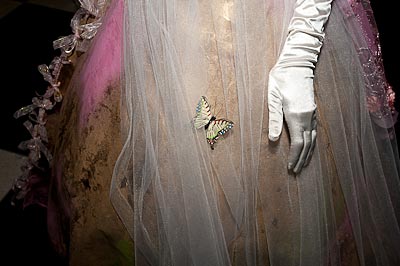United Nations ~ June 18-21, 2013
by Keith Widyolar June 18, 2013
[slider_pro id=”28″]
NEW YORK June 18, 2013 ~ New York’s Brazilian-American community celebrated its Baroque roots in a multimedia presentation at the United Nations with a group exhibition of emerging Brazilian artists, chamber music, opera, poetry and fashion. Baroque is a European artistic style of exaggerated motion and exuberant ornamentation from the seventeenth century. The style was brought to Brazil by Catholic missionaries during the Portuguese conquest and development of the country.
“The Baroque influences all the Brazilian arts with curved and repetitive forms, bright colors and a happy feeling,” explained art dealer Mali Villas-Boas, of the Rio de Janeiro gallery Galeria Mali Villas-Boas.
Brazilian-American soprano Caroline Braga described her feelings while performing at the event, “I speak and sing the languages of opera, but singing opera in the language of my ancestors is very emotional. People don’t realize that Brazil has classical music. I’m very proud to share my Brazilian roots with the world here at the United Nations.”
Composer Thiago Tiberio conducted a world premiere of his chamber composition, “Choro No. 2.” According to Tiberio, “the Choro tradition has similarities with Baroque chamber music in its constantly churning rhythm, in the melodic contour of its themes, and in its formal structure.”
Fashion designer Sonjja Baram, who showed ten looks designed for the event said, “the Baroque influence came to Brazil with the Portuguese. Its influence is strongest in the northeast where the Portuguese used to have their plantations.”
Baroque brings to mind classical music, opera, ornate churches and decorated furnishings, but it doesn’t make you think of Brazil. Artist and organizer Antonio Oliveira of the International Artists Coalition explained, “This event shows how Portuguese artistic styles of the 1600s have filtered through time and the mix of peoples to create something unique in the world, contemporary Brazilian culture.”

